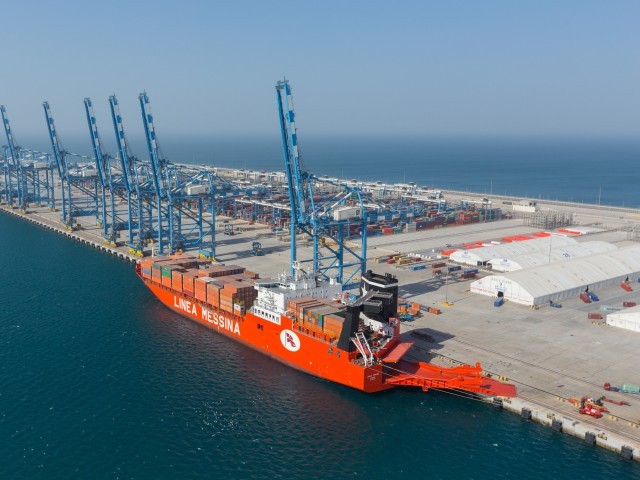Officials from Russia, Iran and India are planning to hold a meeting on November 23 to discuss launching the 7,200-kilometer (4,473-mile) International North-South Transport Corridor (INSTC) as a cheaper and shorter alternative to using the Suez Canal, a key waterway that separates the African continent from the Middle East.
Stretching from Indian ports to northern Europe and passing through the Caspian region, the route is expected to be a cheaper and shorter alternative to the 16,000 kilometer-long (9,942 miles) Suez Canal.
“The INSTC is the shortest multimodal transportation route linking the Indian Ocean and the Persian Gulf via Iran to Russia and northern Europe,” Iran’s Financial Tribune quoted the Indian Ministry of Commerce and Industry as saying last week.
The INSTC, conceptualized in 2000, will make it possible for cargo to move from India to the Iranian port of Bandar Abbas. From there, the goods will be transported by land to Bandar Anzali, Iran’s port on the Caspian Sea. After that, shipments move to the Russian southern port of Astrakhan, and continue onward to Europe by rail. Estimated operational capacity is at around 30 million tons of goods per year, and goods can be shipped from one extremity to the other in just 20 days, instead of 45.
While the corridor has been planned for nearly two decades, officials are eager to finally get it off the ground.
During a meeting with a Russian business delegation held in New Delhi last month, India’s Union Commerce and Industry Minister, Suresh Prabhu, said, “All issues may be resolved in order to operationalize the route as early as possible,” according to Iran’s Financial Tribune.
“It is not only to make the Indian-Russian trade or Indian-European trade profitable, actually it will make it very lucrative for east Asia and southeast Asia exporters,” P. S. Raghavan, an official with the National Security Advisory Board, said. “There is nothing to stop INSTC from being activated in a matter of months.”
India has expressed its readiness to double trade with Iran over the next five years despite pressures emanating from Washington on any country dealing with Iran. In September, Prabhu met with the Iranian Minister of Roads and Urban Development, Abbas Akhoundi, in New Delhi to discuss the potential of increasing bilateral trade between the two countries.
Iran’s Caspian region neighbor Azerbaijan provides a pivotal link within the INSTC. The launch of the Astara-Astara railway, which links Azerbaijan to Iran section, in February will make shipping goods from India to Europe more efficient and cost-effective. Additionally, the launch of the 204 kilometer-long Alat-Astara highway in Azerbaijan also acts as an artery connecting countries along the corridor.







 Azerbaijan and Armenia started the process of demarcation of their border on Tuesday, with the installation of the first border markers based on ge...
Azerbaijan and Armenia started the process of demarcation of their border on Tuesday, with the installation of the first border markers based on ge...
 Armenian sappers commenced on Monday mine-clearance operations in the territories adjacent to the Saint Mary Church in village of Voskepar (Armenia...
Armenian sappers commenced on Monday mine-clearance operations in the territories adjacent to the Saint Mary Church in village of Voskepar (Armenia...
 Iran and Pakistan have signed eight cooperation documents in various fields, and agreed to strengthen ties to fight terrorism in the region.
Iran and Pakistan have signed eight cooperation documents in various fields, and agreed to strengthen ties to fight terrorism in the region.
 President Aliyev emphasized the critical role of the North-South Transport Corridor in fostering transport cooperation between Azerbaijan and Russi...
President Aliyev emphasized the critical role of the North-South Transport Corridor in fostering transport cooperation between Azerbaijan and Russi...



